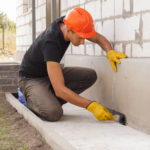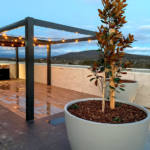If you’re looking for the most bang for your buck, wall panels are the way to go. They’re simple to put together, and there’s an extremely wide range of colors and textures to choose from, including both natural and synthetic materials. Despite the fact that they were only recently introduced to our market, wall protection panels at Rootex Australia have garnered tremendous popularity and success among consumers. So, what exactly are they? You’ve come to the right place if you want to learn more about wall panels, including their types, sizes, features, and benefits.
What Types of Wall Panels Exist
● Rack Typesetting Panel:- These boards range in length from 2400 to 3700 mm and width from 125 to 300 mm, with an 8 to 12 mm thickness. When it comes to covering tiny areas, this style is the most popular. For their installation, a wooden or metal crate is necessary. The panels link together because of the groove and tenon (or because only slots and tabs join the two panels, in which case there will be a gap). Self-tapping screws or staples secure the panel to the frame (into the groove). Chipboard, hardboard, PVC, and MDF are commonly used to make slatted typesetting pads.
● Tile Patterned Panel:- These panels are square in design and range in size from 30 x 30 to 98 x 98 cm. By the way, they’re great for laying down diverse figures with a variety of hues and textures. Panels are normally braced against the wall with adhesive or capping, and they are only held together by grooves and inserts in them. Chipboard, PVC, MDF, and MDF are all materials that can be used to make tile typesetting pads.
● Sheet Wall Panels:- Large diameters – from 1 22 to 2.44 m, with a thickness of 3 to 6 mm – substantially simplify the process of finishing walls. These panels have a multilayer construction with stone, wood, or tile imitations on the surface. The seams are masked by moldings, and the installation is done using adhesive. In the production of sheet metal wall panels, resin-impregnated fiberboard is frequently used.
There are various styles for the building of interior walls and various departments, in addition to the three major forms of ornamental wall panels. In the form of fully prepared walls with a heater and a humidity and vapor barrier inside, these get both the cement panel and the sandwich panel for modular houses. Typically, sandwich panels are used in villas and country homes.
Conclusion:- It is possible to eliminate such preliminary concerns as wall alignment, as well as eliminating existing wallpaper, plaster, and paint, i.e. pre-finishing of the walls, by employing wall panels as a finishing product. Furthermore, the installation of wall panels does not necessitate any special skills or certification. All you’ll need is a nail, stapler, wood sticks, and, of course, the panels themselves. The wall panels also provide great space and sound insulation, as well as concealing telephone, computers, and other electrical lines.













